Mdm Chng of the Pang Family – A Mother of Journalists, Educationists and Revolutionaries
by Ang Yik Han
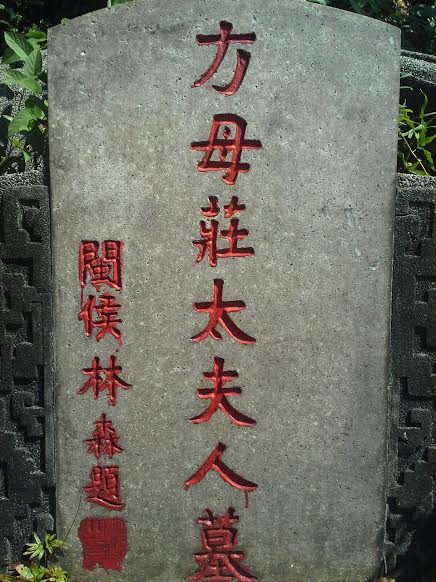
The tombstone of Mdm Chng, who died in 1936 at the age of 77. The characters on the tombstone were written by Lin Sen, KMT Chairman. (photo Yik Han)
Located at Hill 4 in Bukit Brown, the Teochew style tomb of Mdm Chng of the Pang family (方母莊太夫人) is simple and nondescript. A sharp-eyed observer will notice however that the calligraphy on the tombstone came from the hand of Lin Sen (林森), Chairman, of the ruling pre war Nationalist government in China.
Another sign of her family’s close connection to the Kuomintang was the fact in her obituary in the Nanyang Siang Pau, she was described as the mother of a martyr. This was in reference to her second son, Pang Nam Gang (方南岡), whose story was recorded in Feng Ziyou’s “Anecdotal History of the Revolution《革命逸史》” published in 1948.
Although two of Mdm Chng’s sons passed away before her, the names of all her sons were inscribed on her grave: Siao Cheok少石 (deceased), Nam Gang 南岡 (matyred), Chee Dong 之 棟, Huai Nam 懷南, Chee Cheng 之楨. Also present were the names of two daughters, though her obituary only mentioned one surviving daughter.
Pang Nam Gang had a good grounding in classical Chinese education. However, he spurned the traditional path of becoming a mandarin and chose to pursue his studies in Japan. There, he joined the Tongmenghui. Deeply committed to overthrowing Manchu rule, he devoted his time outside of studies to learning how to make bombs.
In 1905, Pang and eleven of his compatriots in Japan were ordered by Sun Yat-Sen to return to China to assist in the Huang Gang uprising in the Teochew region. Injured while preparing bombs, he was brought to Hong Kong and hospitalised, hence missed out on the action. When the uprising petered out, Pang decided to join his uncle who was a local governor in Gansu, with the intention of seeking opportunities to incite the local Hui people to rise against the Qing. His uncle was initially pleased to see his nephew, but flew into a rage when word reached him that Pang was a revolutionary. Locked up by his uncle, Pang escaped with the help of other relatives, stealing two horses and riding to Hankou, where he sold the horses and boarded ship for Japan to continue his studies. Eventually, he made his way to Penang where he became the editor of the Kwang Wah Yit Poh newspaper which was linked to the Tongmenghui.
The young revolutionary could not sit still for long. When news of the successful 1911 uprising in Wuhan reached the Nanyang, Pang rushed back to China where he raised a fighting force in his home county of Pho Leng. When Yuan Shikai was elected the first President of the nascent Chinese Republic, Pang felt that Yuan could not be trusted as he had too many links with the old regime. Disgruntled, he returned to Penang where he took up his old job at the newspaper.
Pang’s worst fears came true in 1915 when Yuan Shikai assumed the title of Emperor. This time, he could no longer abide the situation and returned to China again to fan the flames of revolution. Unfortunately, he was captured in Macau by Yuan Shikai’s agents and smuggled across the border and imprisoned. At first, he assumed a false identity and did not divulge any information even under torture. However, his fervent preaching of revolutionary ideas to his fellow prisoners gave him away and he was summarily executed. So perished a martyr of the Chinese Revolution at the age of 29.

Photo of Pang Nam Gang (reproduced from the book “The Teochews in Penang: A Concise History” by Mr Tan Kim Hong)
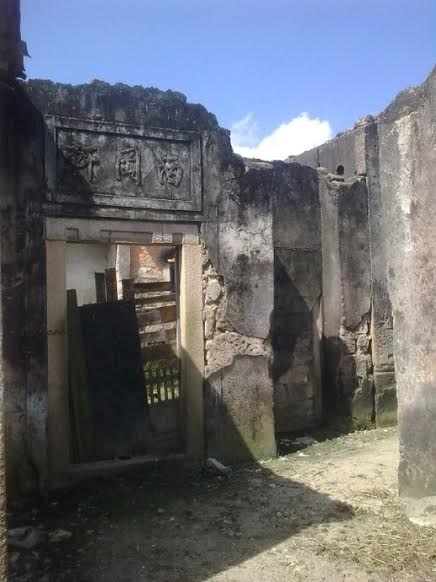
The house of Pang Nam Gang in Pho Leng (taken from the site 方益森的博客 http://blog.sina.com.cn/s/blog_756c1ab90101ipv2.html)
Mdm Chng’s obituary also mentioned that her three surviving sons were active in the areas of journalism, education and social works. Her youngest son, Pang Chee Cheng (方之楨), was in the limelight as well for his involvement in politics. A journalist, he was a KMT cadre who actively canvassed support for the party as one of the main committee members of the Nanyang branch headquarters.
In 1930, Sir Cecil Clementi became the Governor of the Straits Settlements. He had a dislike of the KMT due to its instigations of strikes during his previous posting in Hong Kong. On the day that he arrived and assumed office in Singapore, it was unfortunate that the KMT Nanyang branch headquarters chose to hold its general meeting at the same time.
One of the first acts of the Governor was to summon the KMT representatives to his office where he told them in no uncertain terms that the KMT was not allowed to operate local branches in the Straits Settlements and Malaya. A few months later, the Governor upped the ante by issuing orders to deport Pang Chee Cheng and another KMT stalwart; well aware of the situation, they left on their own for China first.
Quiet diplomacy between the British and Chinese governments behind the scenes eventually led to the deportation orders being rescinded. In later years, Pang Chee Cheng was based largely in China where he was active in the Overseas Community Affairs Council (僑務委員會) set up by the Nationalist government.
Pang Chee Cheng often met with renowned personalities of the day. So it was that when the Indian poet Tagore visited in 1927, Chee Cheng arranged for him to travel to Muar and visit Zhonghua School (中華學校, a forerunner to today’s 中化), where Tagore was received by his brother Pang Chee Dong (方之棟) who was the principal then. A graduate of a university in Beijing, Chee Dong was successively principals of Chinese medium schools in Kajang, Muar and Batu Pahat. In 1933, he may have worked as editor of a Chinese newspaper in Rangoon as well.
After the Japanese invaded, he perished during Sook Ching in Singapore, leaving behind his widow and 2 sons.
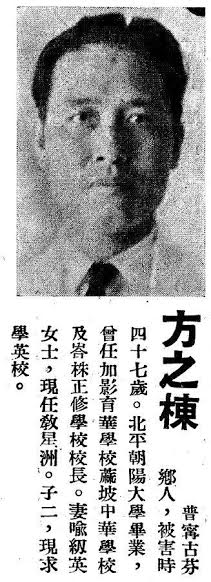
A short biography of Pang Chee Dong in the 8th anniversary commemorative publication of the Nanyang Pho Leng Hui Kuan published in 1948.
The fourth son Pang Huai Nam (方懷南) was the first editor of Nanyang Siang Pau (南洋商報) established by Tan Kah Kee in 1923. Slightly less than a month into its publication, he left the newspaper as the Straits Settlements authorities found his writing too political for their liking. He was also a committee member of the Poit Ip Huay Kuan and principal of Choon Guan School. It was mentioned in Phua Chay Leong’s “The Teochews in Malaya” that he shared the same sad fate as his elder brother Chee Dong during Sook Ching.
Mentioned as well in Mdm Chng’s obituary was one of her grandsons, Pang Say Hua (方思法). Born in Singapore to her eldest son, he was “fostered” to his uncle Pang Nam Gang; his father was convinced that his second brother would come to no good end with his revolutionary ways and hence it was better that he had a son to his name. Pang Say Hua went back to China to study and subsequently became a signaler in the Nationalist Army. He was one of the many caught up in the tumult of the times. Due to his background, he suffered after the Communists took over, being imprisoned for over ten years. After his release, he worked at various jobs and retired in 1980. His story became known when a civic organisation in the Teochew region which sought to recognize veterans of the Sino-Japanese War found him and publicised his story.
Single for life, he attended church regularly and spent his last days in a Christian old folks’ home where his favourite pastime was to watch Teochew opera. He died in Jan 2015, a month after he celebrated his 104th birthday.
Source: http://www.stcd.com.cn/html/2013-09/21/content_464908.htm
The Penang Heritage Festival 2015 will be soon be upon us, mark your calenders 4th July to 7th July, book your flights and head north, for this year’s theme will leave you salivating.
‘EAT RITE: Rituals Foods of George Town’, Heritage Celebrations 2015 puts the focus on the city’s festive heritage with emphasis on the special foods made to celebrate each occasion. More than just a source of nutrients, such foods are rich with significance and symbolism that express the beliefs and hopes shared by the community.
The Brownies had a heritage blast last year and had their fill of the landmarks of Georgetown and the stories recounted here in:
To Penang With Love.
by Simone Lee
Penang and George Henry Brown (1826-1882)
Though at opposite ends of the Malayan peninsula, the islands of Penang and Singapore share common ground in culture and history, and even identity. Last year (2014) the Brownies set out exploring the connections with Singapore’s past while celebrating the Penang Heritage Festival in commemoration of George Town’s listing as a UNESCO Heritage site.
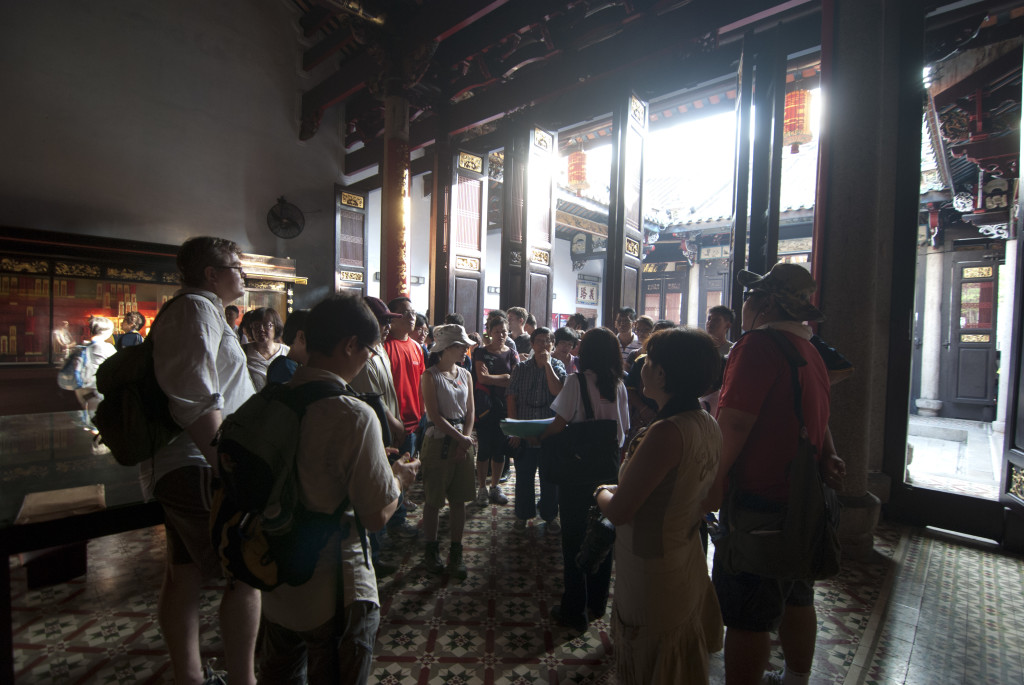
Brownies on a heritage tour during the Penang Heritage Festival. Photo taken at the Han Jiang Ancestral Temple
While the Bukit Brown Cemetery volunteer guides were in Penang, they paid homage to the person that the cemetery was named after. George Henry Brown arrived in Singapore in the 1840’s from India and bought parcels of land around Upper Thomson including Mount Pleasant, which he named because of its pleasant surroundings. Although Mr.Brown did not buy the exact piece of land that now holds Bukit Brown cemetery, his name was adopted as the locals referred to the hills in the area as “Kopi Sua” or Brown’s hill ( *kopi literally means coffee but is here referred to as brown for its colour, due to limitations in the dialect vocabulary.) In the 1880’s, Mr.Brown sailed to Penang following an accident with a tapioca machine on his estate in Singapore, which severely injured his arm. He was there to recuperate in his brother’s home but complications from injury set in and he passed away. He was buried at the Old Protestant Cemetery in GeorgeTown.
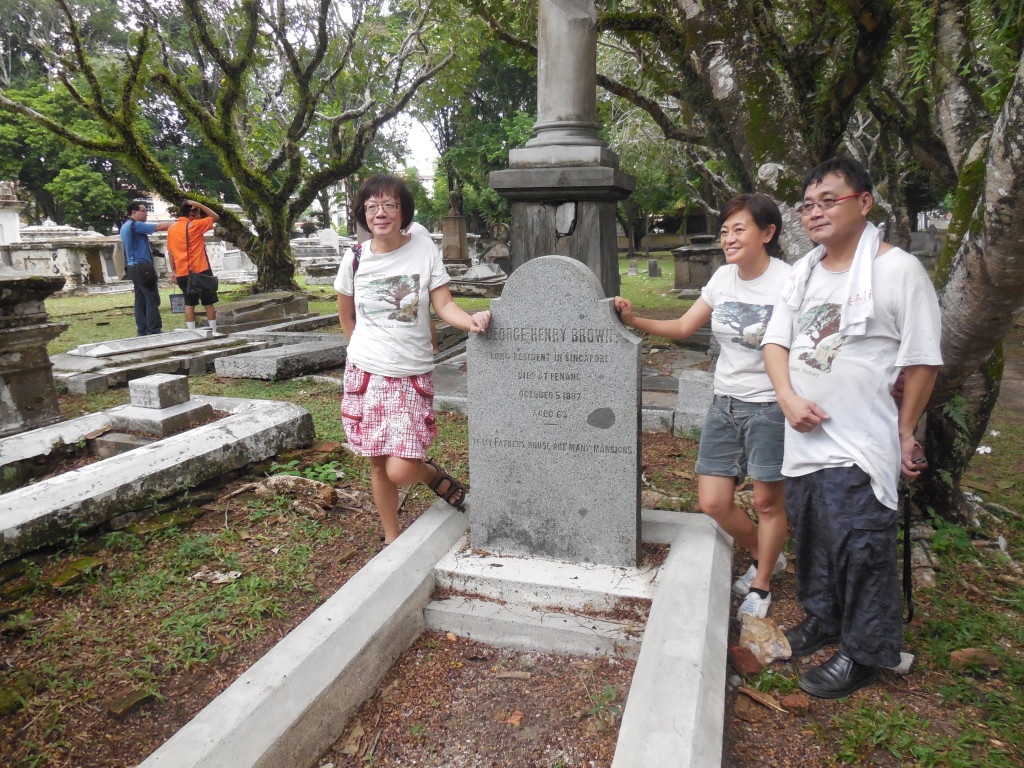
A moment of reflection and wonder for the Brownies at George Henry Brown’s resting place. Picture by Cuifen
The Old Protestant Cemetery is the oldest christian cemetery in Penang. It is where Sir Francis Light, the founder of colonial Penang, was also laid to rest. Thomas Leonowens, the husband of Anna Leonowens is also buried there. After the death of her husband, Anna moved to Singapore and with George Brown and Tan Kim Ching’s (son of Tan Tock Seng) recommendation, she became the English tutor to the children of King Mongkut in Siam. Her story is immortalized in various versions of The King and I (or Anna and the King).

Some of the tombstones from tombs damaged by WW2 air raids were salvaged and installed along the walls of the cemetery.
Kapitan Chung Keng Quee (1821-1901) and the Tan Kim Ching (1829-1892) connection
High on the Brownie itinerary, was the hunt for the biggest tomb in Penang (and possibly in Malaysia). The immensity of the space where life sized statues guard the grand tomb of Kapitan Chung Keng Quee is a jaw-dropping experience. Kapitan Chung or Ah Quee was a leader in the Chinese community and was known for his generous contributions. He was also the headman of the Hai San secret society who led the group through the 4 Larut Wars and supported the Pangkor Treaty. The fierce fighting over the booming tin mining territories in Taiping (formerly known as Larut) involved members of the Ghee Hin and Hai San secret societies from as far as Singapore. To end the bloodshed, Prince Abdullah who himself was embroiled in a succession crisis and was sympathetic to the Ghee Hin faction, traveled to Singapore to seek help from Tan Kim Ching. As a prominent leader in the Chinese community Tan brought to bear his influence in the matter and called on the British administrators who had charged of The Straits Settlements to intercede and broker a peace agreement. The rest as they say is history. The Pangkok Treaty ended hostilities with a truce and Larut was then named Taiping – 太 (tai – ‘great’) and 平 (ping – ‘peace’). More on Romancing Taiping here.
Back in Georgetown, Penang, Kapitan Chung was also known for his expansiveness and exquisite taste in architecture and all things Chinese culture and history. His grand townhouse in Georgetown showcases some of the finest artisan work of that time imported from both China and Europe and is now opened to the public as the Penang Peranakan Mansion. Next to his townhouse is Kapitan Chung’s private temple. A life-size bronze statue of Chung stands in this temple.
Khoo Tiong Poh (1830-1892) and Tiong Bahru
Resting at a corner of the Jalan Free School roundabout is buried the man who is named for Tiong Poh road in Singapore, Tiong Bahru. Khoo Tiong Poh was a Chinese merchant and ship owner. He owned the shipping and trading company, Bun Hin & Co at Malacca Street, in Singapore, and within a few years opened branches in Penang, Hong Kong, Amoy and Swatow, making it the largest and leading shipping enterprise in the Straits. He was also known for his philanthropic deeds which included donations made to cemeteries and temples in Penang, and to the coastal defence and flood relief in China, earning him the title Dao Tai 道台 by the Qing government.
After a prolonged illness, Mr.Khoo passed away in Singapore and his body was shipped to Penang to be buried at his plantation. His son, Khoo Phee Soon, who resided in Singapore till his eventual death is buried in Bukit Brown Cemetery.
Khoo Kongsi
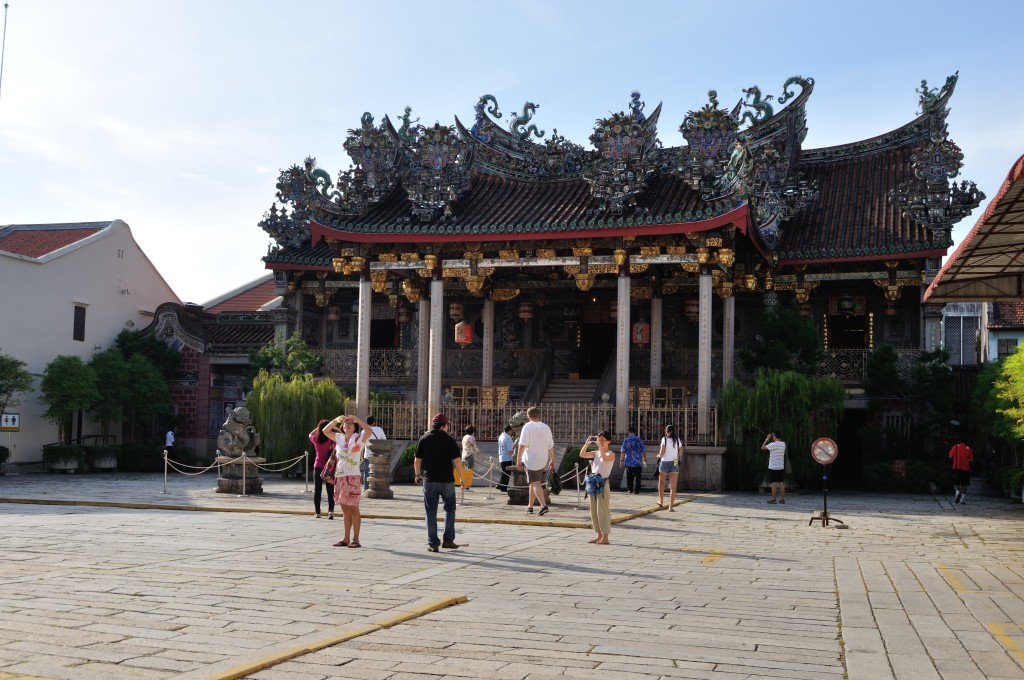
Brownies approach the grandest temple in Malaysia, Leong San Tong Khoo Kongsi clan temple (photo by Ang Yik Han)
No trip to Penang is complete without visiting the Leong San Tong Khoo Kongsi. The clan association which has opened it doors to the public as a living museum, displays the rich history behind the Khoo lineage, the grand architecture, and the elaborate Chinese decorations, paintings and carvings. It also showcases prominent pioneers who made their names in the society and contributed generously to the community in Malaya and Singapore. These men include Khoo Seok Wan, Khoo Teck Phuat and his father, Khoo Yang Tin.
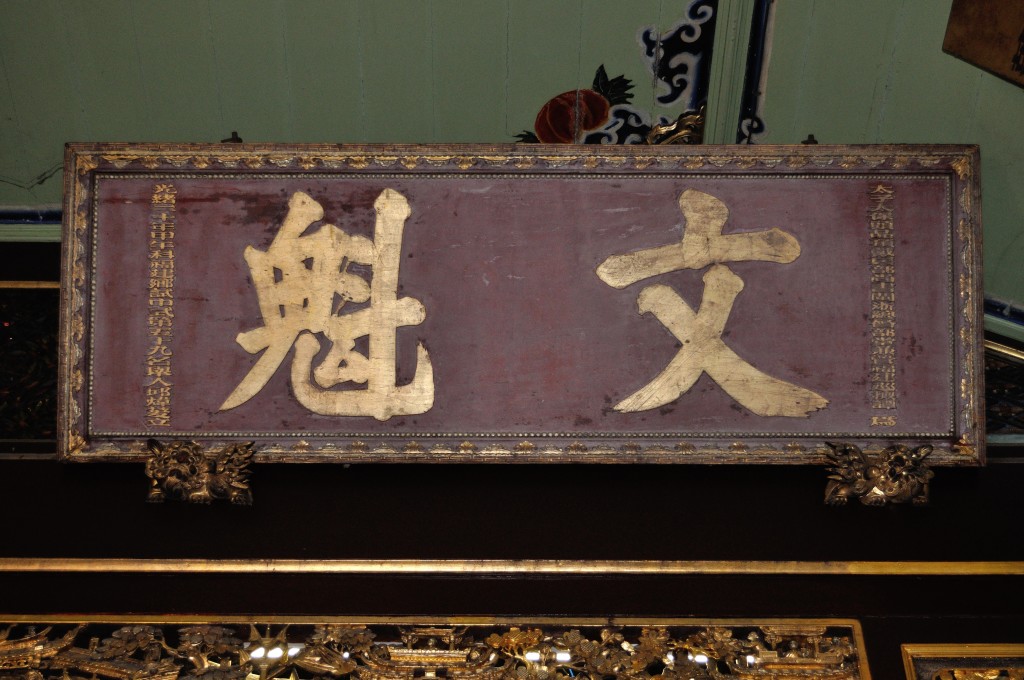
A plaque of recognition in the ancestral hall bearing Khoo Seok Wan‘s name
Over the years, the Leong San Tong has gone through a number of restorations. Over the span of 3 years (1999-2001), the biggest restoration exercise saw conservation specialists and craftsmen from China and India, flown in to work on restoring and reinstalling parts of the building with materials that were traditionally used. These included traditional organic paint, and terracotta tiles which were imported from China. The massive restoration brought Leong San Tong’s shine back to its authentic glory and garnered the National Heritage Restoration Award in 2000, and helped sealed Georgetown’s UNESCO World Heritage status in 2008.
For the few short days, the Brownies visited a few other sites in Penang which had links to Singapore but yet to explore some completely, saving them for future Brownie adventures.
=================================================
Acknowledgements :
We are grateful to members of the Penang Heritage Trust for their hospitality and guidance in our trip. Special thanks to Salma Khoo, Lim Giak Siang, Clement Liang and Joanna Khaw.
A special mention is the place the Brownies called ‘home’ for 3 nights; the Ren I Tang Heritage Inn. The shophouse once housed the oldest traditional chinese medical practice in South East Asia, Yin Oi Tong, for 124 years. It went through a 2-year restoration process which retained much of the original features, including the air-well, wooden staircase and roof tiles. Today, one can find himself soaking in Ren I Tang’s history at the comfort of his room, while sipping a cuppa at the bistro or just bybrowsing through the museum.
About the Brownies and their off-site sojourns:
The Brownies’ yearning to connect to history and thirst for adventure, brings them to various locations within and beyond Singapore. The objectives of these retreats are, to study the historical and cultural links to Singapore, and to strengthen kinship amongst the brownies.
(Brownies are the volunteers who conduct regular weekend guided walks and independent research on heritage, habitat and history of Bukit Brown Cemetery.)
He was an old trustee of the Soon Thian Keing (Temple) who together with his wife is buried at Bukit Brown. Through his personal memories, Ho Siew Tien (1864-1960) helped shed light on the temple’s history.
This story by Ang Yik Han begins with the origins of one of the oldest temples in Singapore.
***************************************************************************************
In the 1980s, a debate took place in the local newspapers over the age of an old Chinese temple dedicated to the earth deity Tua Pek Kong in Malabar Street. Historians argued over an ambiguous phrase in one of the temple’s old stelae, which stated that the temple, the Soon Thian Keing (順天宮), was established during the years of the reigns of Jiaqing and Daoguang (“嘉道之際”). As the Jiaqing Emperor ruled from 1796 to 1820 and Daoguang from 1821 to 1850, proponents of an earlier dating for the temple argued that its establishment may have predated the founding of Singapore in 1819. However, there was no direct evidence to support this claim. No artefacts survived from the temple’s earliest days and the stele in question was erected only in 1902 when the temple was reconstructed.
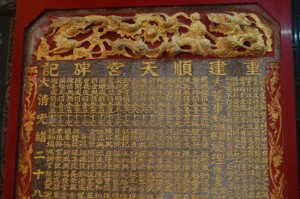
Part of the 1902 stele still preserved in the Soon Thian Keing today. It shows the main temple sponsors and major contributors to the temple’s building fund (photo Yik Han)
One the earliest known accounts of the Soon Thian Keing before its reconstruction was an interview given by one of its trustees, Ho Siew Tian (何秀填), in 1949. He recalled that when he first arrived in Singapore in 1882 at the age of 18, the temple was only a small shrine located next to a tree which housed the Tua Pek Kong statue. The shrine was refurbished by two merchants in 1888. It was only in 1902 (28th year of Guangxu’s reign) that some merchants based in the Sio Po area (the colloquial Chinese term for the part of town north of the Singapore River) came together to construct a proper building for the temple.
Other than getting a new building, the turn of the 20th century was significant for the temple for another reason. Some Hokkien merchants started a school in 1903 and then turned to the temple committee for funding to sustain the school. Thus began the decades long association between the temple and the Chung Cheng School (崇正学校) [not to be confused with Chung Cheng High (中正學校) which was managed by the Hokkien Association].
Every year, the temple provided for the school’s upkeep from the money paid by the resident monk who was contracted to run the temple. In 1916, a school for girls, the Chong Pun Girls School (崇本女校) was started and likewise funded by the temple. Committee members of the Soon Thian Keing sat on the boards of both schools. Prominent alumni members of the Chung Cheng School over the years included Lee Kong Chian and President Ong Teng Cheong.
As the number of students increased, the need for new premises for both schools was keenly felt. In 1938, the construction of a new school building at Aliwal Street was completed. This housed both the Chung Cheng School as well as the Chong Pun Girls School under one roof. It was recorded that Ho Siew Tian was a prime driver in the construction of the new school building along with the then temple chairman. A trustee of the Soon Thian Keing since 1933, he was concurrently the treasurer of the temple and the two schools, a position he held till after the war.
Hailed as one of the most modern Chinese school buildings of its day, the building has been preserved and is today the Aliwal Arts Centre.
As Aw Boon Haw donated substantial funds towards the building’s construction, the school hall was named after his company, Haw Par.
Old photos dating from 1950 which showed girls of Chong Pun exercising in the school field, today a carpark. Sultan Mosque can be seen in the background.
Ho Siew Tian ran a thriving hardware and building materials business under the chop Ho Hock Ann (何福安) at Beach Road. He also owned a number of twakows for transporting goods. As his wealth grew, he made substantial investments in properties. In 1948, he incorporated his firm as a limited company and handed over its running to his sons, who subsequently expanded the business to firearms.
It was urban redevelopment which spelled the end for the temple and the schools. In 1980s, the temple was acquired by the government for building the MRT. It moved successively to various temporary sites before its present building at Lorong 29 Geylang was completed. With the resettlement of the urban residents in the area, dwindling student enrolment led to the closure of Chung Cheng School in the 1980s as well. Its name was transferred to a primary school in Tampines.
Soon Thian Keing today in Lor 29 Geylang (photo Yik Han)
Ho Siew Tian is buried at Hill 4 together with his wife who died 12 years before him. According to obituaries in the Straits Times and the Singapore Free Press, he was one of the oldest men in Singapore at the point of his death at the age of 96. He was survived by 5 sons (2 other sons died before him), 3 daughters, 2 sons-in-law, 7 daughters-in-law, 81 grandchildren, 8 grand sons-in-law, 4 granddaughters-in-law and 37 great grandchildren.
Ang Kok Kian – A Pioneer of the Soap industry
by Ang Yik Han
It is not clear if Ang Kok Kian (洪轂堅) grew up in Penang or he travelled there from his ancestral village in Nan’an county, Fujian province. During the 1910s, he moved to Taiping with his family but left after two years for Singapore, where he felt there were better prospects.
Of the businesses he established in Singapore, the most successful was the See Sen Soap Factory (時鮮肥皂廠), one of the local firms which rose to challenge the dominance of the market by Western manufacturers then. Although sales trailed behind another local firm Ho Hong Soap Factory, its distinctive “Dog’s Head” (狗頭標) brand soap was popular in Singapore, Malaya, Borneo and Hong Kong, both before and after the war.

Dog Brand Trade Mark (Source https://moulmeincacc.wordpress.com/2014/06/03/castle-at-no-19-barker-road/)
Ang Kok Kian passed away in 1939, leaving behind 4 sons. By then, his eldest son Ang Hai Sun (洪海山) was actively involved in the family business. Not content with expanding the soap factory, he went into oil milling to ensure a stable supply of raw materials for the factory.
Although “Dog’s Head” soap has disappeared from the market for decades, the mark of this locally produced soap can still be seen today adorning the house which Ang Hai Sun built, where his descendants still reside.
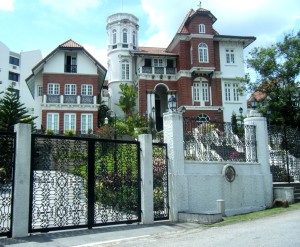
Home of the present descendants of Ang Kok Kian (source https://moulmeincacc.wordpress.com/2014/06/03/castle-at-no-19-barker-road/)
More information on his descendants here
Double tomb of Ang Kok Kian and his wife at Bukit Brown Hill 4
It has been a long time coming, 3 years in gestation but Darren Koh – a pioneer member and solid contributor of the FB group community Singapore Heritage Bukit Brown Cemetery – has finally joined the ranks of Brownies who conduct guided walks. All Things Bukit Brown (atBB) caught up with Darren – whose day job is lecturing on taxation in a tertiary institution – and asks why now and what took him so long?
atBB : You have been following and contributing to the community online for a number of years, why have you now decided to join the ranks of brownies who conduct guided walks?
Darren I blame Chew Keng Kiat! Some time ago, we were chatting and I asked him if he recalled when the “brownies” came into being. He dated the Brownies back to one evening in Sago Lane – in fact the funeral of Raymond Goh’s father. Keng Kiat mentioned there was this group of people at a table at the end of the tentage. I reminded him I was there too – I was sitting with Mil, Su-Min and Vicky at one end. Keng Kiat mentioned that everyone at the table agreed that the Goh brothers could not possibly hunt down tombs and spread the knowledge of Bukit Brown all on their own. Plans for the 8 lane highway had just been announced and time was short. That was about when everyone at the table agreed to take on the guiding so that Raymond and Charles could focus on the tomb hunting. “Teach us. Let us do this for you.” And so – to the memory of Keng Kiat at least, the Brownies were born. Unfortunately for me, my asking when the Brownies was born also pencilled in his memory that I had not guided any walks. Since my conversation with him about that evening, he has often taken the opportunity to ask when I would actually guide. Even as recently as this year’s Chinese New Year dinner, Keng Kiat nudged me again and said “Look around you – everyone at that table so many years ago has gone on to guide. You are the only one who hasn’t. When are you going to do so?”
Truth of the matter was that it was always going to be a matter of time. I was in the midst of getting a new programme running at the university, and that was just soaking up my time. I did not have many people helping me teach then, and I was teaching many of the courses myself. And the courses took place at the weekends. So I really could not go out to the hills as often as everyone did. As you point out, I have been keeping in touch with the Brownies and following the discoveries, the developments, the joys and the lows. But always once removed. I must say, the Brownies were kind enough to include me in many of the offsite events (read – dinner!, etc) and it was at one event when one of our guests asked if I was a Brownie that I sort of blurted out “Not really – I have helped out in some walks but have not guided one myself. I do not think I can wear the title until I have done that.” And that I think was when Catherine jumped in an said, “He’s an Associate Brownie!” So yay! I had a place!
Now that the programme at the university is more settled, I can breathe again, and I was looking to get out of the air-conditioned world, and maybe get more exercise, and do something I like…. I realised why not just guide walks. It ticks all the right boxes – it’s in the midst of nature, it’s out of the artificial world of the office, I will walk a lot, and I will get to do what I like – tell stories. A perfect fit. And so, after a couple of weekends of doing my homework (i.e. walking the hills, trying to find the tombs, getting lost amongst the stones), I started guiding.
atBB Share what has been your experience like so far after 3 guided walks.
Darren It’s been great! Each one has been different: the routing, the tombs we visited and therefore the story that was told was different. And in the last walk, I even had to abort a visit to two tombs and think of rapid replacements as the tombs I had wanted to visit were inaccessible.
It is usually good to have people ask questions – although sometimes that is scary as you never know which angle they will come from. But the good thing about being a volunteer guide is that I can say “I don’t know – will have to get back to you on that.” A bit more difficult to say that in my normal classes!
The one thing I am reminded of, is a piece of advice shared with me by a good friend Tony Oldham, whom I got know well while we were travelling on the Trans-Siberian Railway. He was an archaeologist and anthropologist, and was also a tour guide in Europe. He said, “Never let a few facts stand in the way of a good story.” Something which I have since learnt is very true: the people who come for the walks are not here for a history lesson, or a degree in decorative arts. The finer details therefore do not exactly matter. What matters however, is the story of the person we are calling upon: we bring that person to life when we relate their life and times. Even more so if we can weave a line from the person we are calling upon, to the visitors today. You can see for instance, the change in people when I reveal that we know so much about how Soh Koon Eng died because the daughter of the boy Koon Eng shielded with her body told us the story. Or when they realise the man in the small grave I am talking about was none other than Lee Kuan Yew’s grandfather … All links from the past to the present that they know.
The one regret to date? I wish I had more time to share more with the visitors, but we have 3 hours before we tire. There is only so much we can share in each session. The only problem is when there are certain expectations – just as Frances Yip will never be allowed to have a concert where she does not sing the theme song from the Bund/Shanghai Beach, there are certain tombs that visitors ask for. Then you are stuck in who else to call upon with the time you have left in the walk after up have visited those “top tombs to visit”. I think I will have to be a bit more creative in routing my walks, or just learn to say “Not this time.”
atBB What would you say is your main interest in Bukit Brown?
Darren It’s the transmission of culture and the understanding of history! There is much to be told from the stones: they tell of the person. From the research we get the story to enable us to link the person from the past to what it means today. That is the job of the storyteller – that’s why I love it when people get the stories! Personally – I’m not the greatest fan of bush bashing – the effort undertaken to find the tombs of people. I think my mechanical-pencil hands were not meant for hacking through forests with machettes. But give me the facts, and let me tell the story – that is my forte. Right now, we need to tell as many as possible the wealth of history and culture that lies in Bukit Brown.
atBB notes: bush bashing does not involve machettes as such, more walking sticks and some Brownies carry a small cutter to help them clear vines.
atBB Tell us a little something about yourself.
I have been telling stories since I was young – I even won a school prize and represented the school in a story telling competition when I was in primary school! I think the best way to tell an idea is to put it in a story that the listener gets. The question is how the listener gets it: and I have to tailor the story to the listener.
Darren In many ways, all my past I have been a story-teller: as a lawyer and a chartered accountant who specialises in taxation, I have learnt to use the skill to help in negotiations, in drafting documents, in preparing defence files and in tax audits. Since I switched to academia – it is all about telling stories again, although this time I tell them to students, in the hope they will learn to tell their own stories themselves.
Having dissected a snake in school, I am not that worried about them. But I do fear cockroaches – don’t ask me why – so thank goodness they are not one of the worries i have out in Bukit Brown.
I used to be able to say that I have worked in all the northern continents except where the polar bears roam – but the bears are now roaming further down south into North America so I will probably have to revise that statement now.
atbb observes : As you can tell from his interview, Darren is quite a wit and most diligent, the bonus is he comes with a wealth of knowledge about Chinese culture and temples and is also one of the pioneer membersof the yahoo heritage news group. His next guiding session is at the first regular first weekend guided walks, atBB is launching, starting in June on the morning of Saturday 6 June, 2015, so please register here if you want to “experience” him in person.
For more photos of Darren, the brownie in action please click here and note that you need to have a facebook account to view these photos.
In response to requests for forward planning from interested participants, atBB will commit to conducting regular guided walks at set time slot every first Saturday and Sunday of the month.
Saturday 9 am – 11.30am
Sunday 4 pm – 6.30pm
Meeting place until further notice: Within the gates of Bukit Brown where there is a site construction office as you enter about 100 meters on your left.
Please note: Disclaimer: By agreeing to take this walking tour of Bukit Brown Cemetery, I understand and accept that I must be physically fit and able to do so.To the extent permissible by law, I agree to assume any and all risk of injury or bodily harm to myself and persons in my care (including child or ward)
We will cap attendance at 30 pax for 2 volunteers for better engagement. Event information and registration will be up on a weekly basis on the Heritage Singapore Bukit Brown FB group page https://www.facebook.com/groups/bukitbrown/ and all interested participants are encouraged to register for a place through Peatix ticketing which will be set up.
If you have a group of between 15 and 30, you may also request for a private guided walk subject to availability of volunteers by writing to a.t.bukitbrown@gmail.com. Please include an introduction to yourself and your organization if applicable.
Other useful information for first timers:
Bukit Brown. More than a cemetery. More than a Chinese cemetery. Come discover our habitat, heritage, history. Exhumations have started. Many areas have been cordoned off.
How to get there and handy tips here: http://bukitbrown.com/main/?p=7250
http://bukitbrown.com/main/?p=1170
http://www.openstreetmap.org/#map=16/1.3354/103.8224
Brownie Code: We guide rain or shine.
Please take note:
1. We will be walking through the undergrowth so dress appropriately, especially your footwear.
2. Wear light breathable clothing. Long pants and long sleeves if you are prone to insect bites or sunburn. Bring sunblock and natural insect repellent.
3. Wear comfortable non-slip shoes as safety is important. Walking sticks are recommended.
4. Do read up on Bukit Brown before going so you have a better understanding of the place (e.g. BukitBrown.com)
5. Do bring water, light snacks, poncho/umbrella, sunhat and waterproof your electronics.
6. Please go to the toilet before coming. There are NO facilities anywhere there or nearby.
=======================================
How to get there by MRT / Bus:
Bus services available: 52, 74, 93, 157, 165, 852, 855.
From North: Go to Marymount MRT and walk to bus-stop #53019 along Upper Thomson Road. Take Buses 52, 74, 165, 852, 855
Alight 6 stops later at bus-stop, #41149, opposite Singapore Island Country Club (SICC), Adam Road. Walk towards Sime Road in the direction of Kheam Hock Road until you see Lorong Halwa.
From South: Go to Farrer Road MRT and walk to bus-stop #11111 at Farrer Road, in front of Blocks 2 & 3. Take Buses 93, 165, 852, 855. Alight 5 stops later at bus-stop, #41141, just before Singapore Island Country Club (SICC), Adam Road. Cross the bridge, walk towards Sime Road, follow the road until you see Lorong Halwa.
By car:
Turn in from Lornie Road, to Sime Road. Then, turn left into Lorong Halwa, where parking is limited. Try to use public transport to get there.
Remembering Yeo Bian Chuan
by Simone Lee
Qingming or Tomb-Sweeping Day is a traditional festival on the Chinese calendar in remembrance and respect of ancestors. Families visit their ancestors’ ‘home’ – the grave, for a ‘spring clean’ and replenish their needs by leaving ‘worldly’ offerings. This year, the festival fell on the 5th of April and 10 days before and 10 days after is the period where rituals are conducted.
Bukit Brown is busiest at this time of the year. Jams are not uncommon. Throngs of people drive around the historic cemetery to look for their ancestors’ tomb. They carry with them bags of offerings and cleaning tools. Yet, for another year, Yeo Bian Chuan’s grave laid forgotten.
In February 1915, during the Indian Mutiny in Singapore, Yeo Bian Chuan saved 17 Europeans’ lives by hiding them in their home from a bloody massacre. For this he was awarded a commemorative gold medal but died before receiving it.
Today, Yeo Bian Chuan’s tomb is in a state of neglect, not what a hero deserves. We can only hope that soon a descendant would identify him and restore the glory of his ‘home’, one which he deserves.
Read more on Yeo Bian Chuan’s story at Peter Pak’s blog here.
Bukit Brown Watch Day 2015
All Things Bukit Brown, a civil society group of volunteers, will mark World Monuments Watch Day for Singapore’s first and only World Monuments Fund watch site, Bukit Brown Cemetery, on Saturday 14 March 2015 in a programme of exclusive events to raise awareness on the Heritage, Habitat and History of Bukit Brown.
Watch Day marks the listing of Bukit Brown Cemetery by the World Monuments Fund in October 2013, putting the site on the watch list with 66 other sites globally for 2014 to 2016, in a bid to raise global awareness of sites under threat and encouraging community engagement to take ownership.
On the Bukit Brown Watch Day, we celebrate community at the site with a choice of guided walks from nature trails to unravelling the ties of kin and clan, deciphering the stories of the exquisitely carved stones, storytelling for children, a sketch walk and stations to play some traditional games or try your hand at painting your own tiles inspired by the “Peranakan” tiles of the graves.
This is a ticketed event and registration on Peatix at this link bbwatchday.peatix.com opens on 1 March, 2015, 12 pm. Participants will receive a limited edition Watch Day Tote Bag with a magnet tile and a snack pack of traditional sweets. Registration for this specially curated morning of guided walks and activities is capped at between 20 and 25 pax to ensure maximum engagement with your volunteer guides. There are guided walks targeted at the first time visitor and those who have a deeper interest in history, and something for children of all ages.
The event is organised by All Things Bukit Brown with the support of the Singapore Heritage Society and the Nature Society of Singapore.
Bukit Brown Watch Day 2015 Programme
Date and Time: Saturday March 14, 8am – 12.30pm
Meeting Point and Registration: Open air-area, approximately 200 meters as you enter the main gates of Bukit Brown at Lorong Halwa, on your right just pass the green hoardings, there will be directional signs at various vantage points.
Please note ticketed events are limited to one event, the schedule and geography of Bukit Brown does not lend itself for attendance to more than one ticketed event. There will however be additional activities scheduled for ticket holders to participate in.
A Introduction to Bird Watching with Wing Chong
8.30am – 11.30am (20 tickets)
Home to over 90 resident and migratory birds, Bukit Brown in the morning greets with a chorus of bird song and flashes of colours from pink and green neck pigeons to the cobalt blue of kingfishers.
Join Wing Chong, Chairman of the Nature Society of Singapore (NSS) bird group and you may just catch more than a glimpse of the 13 endangered species which include the red jungle fowl and the Changeable Hawk. (binoculars recommended)
B Unravelling the Connections of Clan and Kin – by Ang Yik Han and Raymond Goh (20 tickets)
Part 1 8.30 am – 10 am with Yik Han
Part 2 10.15 am – 12 pm with Raymond
Conducted in English, this is highly recommended for those with knowledge of Mandarin who want to delve deeper into the familial and socio-economic ties of the past. Both tours will cover tomb inscriptions which are the stone thumb drives of the past. This is a 2- part tour with Yik Han conducting Part 1 covering Chinese clan connections and in Part 2, Raymond will share his new discoveries found just weeks ago during his “bush bashing” on the genealogy of pioneer families.
Raymond and Yik Han are the keen researchers of “All Things Chinese Past” among the Brownies.
C Tales of Wisdom and Wonder: The Young Story Teller with Rosemarie Somaiah
8.45am – 10.00am (25 Tickets including accompanying parents)
Suitable for 4 years upwards, please note a parent must accompany and be responsible for their child/children. Recommended that you bring your own mats to sit on
Join storyteller and published author Rosemarie as she shares stories that honour family and heritage and celebrate the world around us at the largest family tomb cluster of Bukit Brown where the carvings abound with stories of filial piety and animal statuary.
Rosemarie has led workshops and told stories in local and international schools, museums, corporations, over the radio, in libraries and even on the MRT
D Sikh Guards and Kampong Guided Walk with Peter Pak
10am-12pm (25 Tickets)
Combining his passion for Sikh Guard statuary and the flora and fauna of Bukit Brown, join the affable Peter on this trek retracing the bountiful harvest of the old Kampong and find out how a warrior race became elevated to tomb guardians and status symbols for the Chinese Towkays of the past.
E Sketching for Beginners with Marcus Lim
10am – 12pm (20 Tickets)
Please bring your own pen/pencil and sketch pad.
Get inspired by the beauty and serenity that is Bukit Brown and let it guide your first heritage sketch with Marcus, a historian painter who will help with introductory lessons on drawing.
For his feature on samsui women, Marcus won the ‘Cover Art of the Decade’ by the Asian Geographic Magazine and he was Singapore’s first representative to the International Portrait Artists’ Conference in Washington DC, in 2010.
Additional Activities opened to all Ticket Holders
F Old School Games with Andrew Lim
Suitable for the young and those forever young
This is a free and easy station starting from 9am onwards, ending at 12pm
Experience games which were more social and did not need batteries or high speed connectivity, yet still needed skills and just as competitive. Remember the capteh (shuttlecock), goli (marble balls), five-stones, zero-point (rubber-band rope), kuti-kuti (flick)? (Re)discover some of these toys at the Old-School Games station and find out if you (still) have what it takes to beat your opponents.
G “Peranakan” Tile Painting
Session 1: 9am – 10am (limited to 15 tiles)
Session 2: 10.30am – 11.30am (limited to 15 tiles)
Paint, paint brush and tiles provided. Limited to one tile per participant.
“Peranakan” tiles are almost ubiquitous, gracing the shophouses of our past, temples, walkways, tombs and in some modern homes with a wide array of colours and designs. They are also rich in symbolism. These decorative tiles were very popular in the 20th Century and were imported from various countries. Learn the history of the “Peranakan” tiles and paint one of your very own.
H The Wayang of the Tombs by Yik Han
10.30am – 12 pm (limited to 30 participants)
The exquisite carvings on the tombstones of Bukit Brown, come alive with stories from the great Chinese classics, recounted by Yik Han who will also highlight the symbolism and significance of grave artefacts and statuary.
What you should Know
Disclaimer: By agreeing to take part in the activities of Watch Day at Bukit Brown Cemetery, I understand and accept that I must be physically fit and able to do so. To the extent permissible by law, I agree to assume any and all risk of injury or bodily harm to myself and persons in my care (including child or ward)
There are minimal toilet facilities and these are located near the entrance just for Watch Day.
In case of heavy rain and lightning, we will be taking shelter at a site office at the entrance of Bukit Brown. Activities will however continue if there is a light drizzle so please come prepared with umbrellas and/or ponchos.
What to Wear
Please wear comfortable clothes, covered shoes (suitable for light trekking) sunscreen and mosquito repellent.
What to Bring
Water and a packet of traditional sweets will be provided but feel free to bring your own snacks to munch along the way if you tend to get peckish. For Story Telling please bring mats and for Sketching bring your own pen/pencils and sketch pads. Umbrellas and/or ponchos
About:
The World Monument Fund (WMF) mission is to preserve the world’s architectural heritage of significant monuments, buildings, and sites. Every two years since 1996, the World Monuments Watch is a call to action for cultural heritage around the globe that is at risk from the forces of nature and the impact of social, political, and economic change.
Inclusion on the list provides nominators and site owners with an important opportunity to promote their sites locally and internationally, to work towards improved site protection, and to build community engagement in their preservation efforts. Bukit Brown is the first site in Singapore to have gained a listing.
All Things Bukit Brown (atBB) is the banner for a community of volunteers (Brownies) of diverse backgrounds and different beliefs who conduct guided walks and independent research on the heritage, habitat and history of Bukit Brown. Formed in 2012, they have conducted tours for more than 14,000 people, organised two exhibitions and presented talks to schools and museums. In August 2014, All Things Bukit Brown became the first recipient of the Advocate Organisation of the Year Award in the inaugural Singapore Advocacy Awards, presented by civil society champions to recognise and encourage civil activism. For more, bukitbrown.com.
Singapore Heritage Society (SHS) is dedicated to the preservation, transmission and promotion of Singapore’s history, heritage and identity. Founded in 1986, the Singapore Heritage Society is a non-profit, non-government organisation and registered charity.
Nature Society of Singapore (NSS) is a non-government, non-profit organisation dedicated to the appreciation, conservation, study and enjoyment of the natural heritage in Singapore, Malaysia and the surrounding region.
Welcome to a new year, as we cross the threshold into 2015, we look back on the year that has passed.
A is for Advocacy
On 30 August 2014, “The Bukit Brown, Brownies” became the first recipient of the Civil Society Advocate Organisation of the Year Award in the inaugural Singapore Advocacy Awards.

The Brownies with Constance Singam, one of the judges and a highly esteemed civil activist and writer
It was an honour that we could not have dreamed off when we started our journey in January 2012 to raise awareness about the heritage,habitat and history of a 90 year old cemetery, that many say had been “abandoned” and “forgotten”.
Well, here’s the news, they were wrong. And this is why: over 13,000 participants to the guided walks – comprising a demographic from all walks of life, from all ages, from students to community constituency groups, photography enthusiasts, international academics, meet-up groups, and media crews, travel writers, civil servants, docents etc etc; 4 exhibitions over 2 years, the first ever listing for Singapore as a heritage site under threat, under the World Monuments Fund Watchlist 2014, and this year alone, 3 major academic publications. It is a record which speaks for itself, carried by a momentum, best described as organic in nature, and a ground up initiative. When it comes to development in Singapore and how it impacts our history and heritage our sense of identity and place , Bukit Brown as a cause, as a movement, as a place in the memory scape of Singaporeans, refuses to die.
B is for Bukit Brown
2014 was a year Bukit Brown went off-site and “broke new ground” in 2 major exhibitions and inaugural guided walks in the City.
In March, Woon Tien Wei and Jennifer Teo, the husband-and-wife artist-activist team behind Post-Museum curated “The Bukit Brown Index” which was one out of 28 local works featured in an exhibition called “Unearthed” The highlight of their work was a wall on which the names of the exhumed and unclaimed which had to make way for the highway through Bukit Brown, were hand written with the help of Brownies, among others in the heritage and artistic community.
In July, Bukit Brown : Documenting New Horizons of Knowledge was officially opened by MOS (MND) Desmond Lee at the National Library. It represents almost one and half years of research and working the ground documenting some 4,153 tombstones which are affected by the building of a new highway across Bukit Brown, by a team under the leadership of Dr. Hui Yew-Foong, an anthropologist with ISEAS. The exhibition is currently on tour at regional libraries until next year.

The Exhibition at Choa Chu Kang Library (photo Mok Ly Yng) The next and final venue will be at Toa Payoh Public Library. It will open from 4 January 2015 (Sun) till 31 January 2015 (Sat).
In conjunction with the exhibition, All Things Bukit Brown curated 2 special guided walks The Descendants Stories which featured descendants of pioneers sharing their stories of uncovering their roots in Bukit Brown.
Our march into the city was sealed when we partnered the Singapore Heritage Society and co-curated the Bukit Brown in the City and the City in Bukit Brown Walk walks for the Singapore Heritage Festival 2014 in July.
In May, we partnered Jane’s Walks and curated a walk which took participants from the Botanic Gardens to Bukit Brown , bridging the colonial and immigrant narratives of our history.
And in a nod to the Bukit Brown Jane’s Walk, 2 participants Louise and Bridget organised of their own initiative and without any assistance from the brownies, a guided walk for a group of ten of their friends in September. We thank them and hope they will do more!
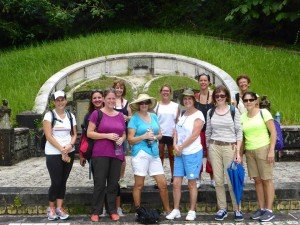
Louise’s and Bridget’s Guided Walk for friends in September inspired by their participating in the Jane’s Walk (photo Louise Ragget)
In September also All Things Bukit Brown, was invited to make a 10 minute presentation in the “Singapore Dreaming” workshop by the Asian Urban Lab as a lead up to a the major conference in 2015 where leading artists, academics, professionals and other thinkers across diverse disciplines will share and explore alternative visions of a Singapore that is sustainable, creative and vibrant.
In 2014, Bukit Brown continued to be featured in student media projects, international news analysis on Singapore’s issues of development and heritage, local TV programmes from “My Grandfathers’ Road” to “Secret Singapore” and its sheer beauty and remembrance of Singapore as as a major battleground in WW 2 was visually showcased in an award winning art house film called “The Canopy” screened at this year’s Singapore International Festival in November.
Next year, watch out as one of the Brownies will guest host a new programme on Channel 5 to introduce Bukit Brown.
After a hiatus and the completion of The Adam Park Project TAPP , the ever popular Battlefield Tours conducted by Jon Cooper returned – once a month every first Sunday – and continue to be over subscribed.
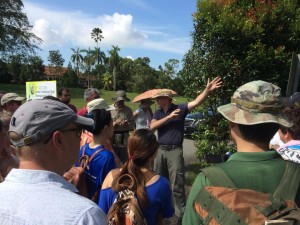
Last Battlefield Tour of 2014 by the lively and knowledgeable war archeologists Jon Cooper (photo Bianca Polak)
In 2014, we conducted more guided walks by private request. Of all the requests for guided walks, the most enthusiastic and frequent requests came from our educational institutions from secondary to tertiary institutions both local and international for “Learning Journeys”
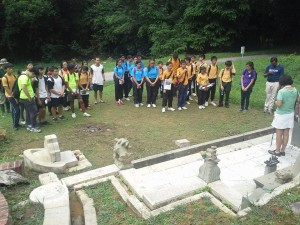
Dunman Secondary School students observing a minutes silence at the grave of Tan Ean Kiam (photo Yik Han)

JNV-Students-at-Ong-Sam-Leong-photo-All-Things-Bukit-Brown
We shifted gears from guided walks and organised on request by Standard Chartered Bank, a Corporate Social Responsibility event which was so successful, the bank has already completed 3 sessions at Bukit Brown of clearing and cleaning selected tombs between May and November 2014. They will make a comeback in 2015.
On site, discoveries continued to be made. This year alone, the two great finds were the founder of Hong San See temple Neo Jin Quee and the family cluster tombs of Lee Kuan Yew maternal ancestors.

Zaobao report on finding Neo Jin Quee, founder of Hong San See Temple, May 5, 2014
On site, as we have done, for every year since 2012, we celebrated NDP ’14 , Our Bukit Brown, Our People with both gusto and with sadness in an landscape which has changed and will continue to change as the road works encroach slowly but surely .
On site, sometime in November, while we were not looking, the ole raintree was chopped down and overnight it was gone, our consolation comes from our shared memories.
C is for Community
It has been the heart of community and your passionate support which has sustained, encouraged and uplifted the Brownies over the past 3 years. A community which includes academics, journalists, artists, writers, descendants, tomb keepers and fellow activists in heritage and the environment. We single out for our gratitude the Singapore Heritage Society and the Facebook Group Community Heritage Singapore- Bukit Brown Cemetery.
When a call was made for feedback to be given on the URA Draft Masterplan 2013 in December of the same year, we received some 30 responses which were sent to the Ministry of National Development. You wrote on how important it was to preserve Bukit Brown for future generations, for the environment, as a space important to root Singaporeans to the land and for the sharing of collective memories.
In June 2014 the Masterplan was gazetted with no changes to plans for Bukit Brown. But if you thought, your efforts were for naught, let us reassure you, it was noted and it did make a difference in paving the way for better engagement on the future of Bukit Brown. We have only just began.
In 2014, three major academic papers on Bukit Brown were published
We thank : (Drs) Natalie Pang and Liew Kai Khuin “Archiving the Wild Archivists”, Dr Terence Chong (Singapore Heritage Society) “Bukit Brown municipal cemetery: Contesting Imaginations of the Good life in Singapore” and Prof Huang Juanli ” Resurgent Spirits of Civil Society Activism: Rediscovering the Bukit Brown Cemetery in Singapore” for their comprehensive and thoughtful and thought provoking papers.
To the descendants who have trusted us with their stories, we salute you.
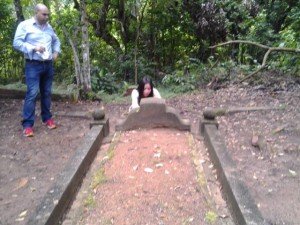
Gillian Lim-Mendy with her husband flew from London to pay their respects to their Grandfather Lim Hock Seng for the first time in December. Her story can be found here (photo Catherine Lim )
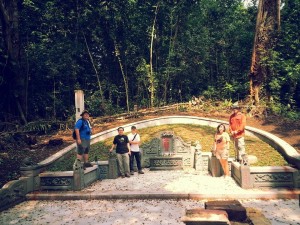
Brownies visit the grave of Yap Geok Song, newly renovated after descendants contacted Peter Pak to show them their ancestor’s tomb after reading his blog
And a special mention and shout out to Zaobao journalist Chia Yei Yei and the heritage reporters of Zaobao for the breathe and depth of coverage they have given to all things related to Bukit Brown from pioneers to Brownies in 2014.
The Chinese daily capped off the year in recognition of the part the Goh Brothers have played in uncovering our historical and heritage gems by headlining them among the paper’s Personalities of 2014.
We ended 2014 on site, in the last guided walk of Bukit Brown for the year with some 50 people turning up.
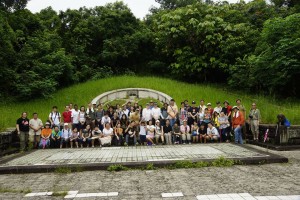
Collections, Recollections and Our Favourite Moments, last guided walk for 2014 on Sat, 27 Dec (photo Yeo Hong Eng)
50 is of course a significant number as we cross the threshold into 2015. 2015 is SG50, a year of national celebration of 50 years of our history and achievements. But what can we look forward to in a landscape which will continue to be pockmarked and drastically changed by construction work on the development of a highway?
We will keep calm and carry on, engage constructively, walk the ground, walk the talk, continue to be excited by new discoveries and we will – and this is a clue – write a new chapter on our past and take it into the present. In short, we will continue to honour our heritage, habitat and history, and remember those who laid down their lives in memoriam for without them, SG50 would not be possible.
“Lest we Forget”
We remember Victoria Tan and Edmon Neoh-Khoo
RIP
Compiled by Catherine Lim
All Things Bukit Brown congratulates Raymond and Charles Goh who have been chosen by Chinese news daily Zaobao to be included in their list of Personalities of 2014. For the Brownies, it is a timely recognition for the 2 brothers who have been exploring and uncovering the “lost” heritage and history of Singapore since the mid 2000s. Their hard work, sheer doggedness in research and walking the ground, is our inspiration, and we are proud to claim them as Brownies and proud, we walk with them
===============================================
Translated Article by Raymond Goh
2014 Personality of the Year by Zaobao weekly, Dec 28, 2014
Raymond Goh (51) and Charles Goh (46), Looking at history through the departed
If not for praying to one’s ancestors, one would not usually go to the cemetery. That day the reporter asked a taxi driver to drive her to Bukit Brown cemetery. The driver was not very happy, and so she has to alight at approx. 200 metres from the cemetery at the road cross junction. But the Goh brothers does not have any sort of taboo. They keep on bringing people to the cemetery to look for their roots, rediscovering old tombs hidden in the depths of the forest, bringing history back to life.
Ever since Sep 2011 when news broke out that part of Bukit Brown has to give way to a road and approx 5000 tombs has to be exhumed, nearly twice a month during weekends and public holidays, one would see volunteer guides from all walks of life known as “Brownies” wearing Bukit Brown heritage T shirts, and guiding the public on the history and heritage of Bukit Brown.
Raymond and Charles Goh are a familiar pair among the Brownies and the pioneering guides among them.
Bukit Brown Pioneering Explorers
Charles Goh is a construction safety manager and has from young like to explore the unknown to get to the root of matters. Some things will be forgotten or disappear as one grow up, and Charles hope to revive the forgotten collective memories. Since the SARS crisis of 2003, Charles responded to the call of STB and together with his brother registered as tourist guides. They do voluntary guiding for visitors to the cemetery, and let these visitors know Singapore in an unique way.
Together with Raymond Goh, a pharmacist, they founded Asia Paranormal Investigators, as a step forward to fulfil their ambition to research all things unknown. Since 2006 they also started to lead tours to Bukit Brown, do research into tombs and even design a cemetery map for the public to do DIY tours on their own.
Raymond said that Bukit Brown and the surrounding Seh Ong and Hokkien cemeteries has a total of 200,000 tombs, with the earliest dating all the way to 1826. From that year to the closure of the cemeteries in the early 1970s, one can see 150 years of changes and transformations reflected through the tombstones of Bukit Brown. Our history is gathered piece by piece from the collective stories of all these tombstones.
2014 Great Finds
Through the efforts of Charles, Raymond and the Brownies, there has been a surge in interest to find one’s ancestor. Due to the passage of time and insufficient information, the success rate of finding one’s ancestor for these tombs is only about 50%, but the rediscoveries of pioneers’ tombs provide much encouragement to the Goh Brothers. This year alone, the two great finds are the founder of Hong San See temple Neo Jin Quee and the family cluster tombs of Lee Kuan Yew maternal ancestors.
According to the archives, Hong San See founder Neo Jin Quee was relocated to Bukit Brown cemetery. When Raymond Goh first encountered this tomb, he combined forces with local history researchers Walter Lim and Ang Yik Han to research into this tomb and finally confirmed the identity of this tomb. The discovery of Neo Jin Quee’s tomb and the tombs of his wife, son and daughter-in-law provide important clues to the study of the immigrant stories of early Lam Ann people to Singapore.
Apart from this, in Jun this year, a news report to find the rickshaw puller Koh Teong Koo made Raymond recalled about Lee Kuan Yew maternal grandfather Chua Kim Teng and maternal grandmother Leong Ah Soon. Based on the clue provided by tombkeeper Soh Ah Beng, Raymond and Walter Lim finally found the tombs of Chua Kim Teng, his second wife and his father’ tombs. They later managed to find Leong Ah Soon’s tomb from the burial register, that is Chua Kim Teng’s third wife. The Chuas were a typical Peranakan family, and Chua Kim Teng was a successful merchant. These finds provide important historical information for the study of this early Chua pioneer family.
Apart from graves, Charles Goh is also interested into heritage sites and ruins. Not long ago, together with NHB Group Director (Policy) Alvin Tan, they rediscovered a century old lunatic asylum wall, which provide valuable information for the study of this early institution.
The greatest difficulty in finding graves is not mosquitos and insects bites, nor wild snakes or animals, nor wild vegetation, but the limited information and resources to find the graves.
Although there are burial records in Bukit Brown, many descendants does not know the dates their ancestors passed away, and some can only remember their ancestors’ Chinese names, while the records are in English. The lesser the information, the more difficult will be the tomb find.
As such, Raymond said that sometimes it require more than the efforts of one or two persons, but the combined efforts and expertise of many volunteers to help find a tomb.
As for 2015, the Goh brothers will keep on their volunteer work of researching and finding tombs, and their mission is to find an earlier tomb than 1826 as there were already Chinese people then who died before that.
By Mok Mei Ngan
Catch a video of Raymond Goh on zaobao.com, sharing his interesting discovery of Bukit Brown Cemetery here
================================================
Zaobao weekly – 2014 Personality of the Year
They may not be famous people in the limelight,
But yet each in their chosen field give out their own light and heat and leave behind beautiful imprints in 2014
There is a Western proverb “The devil is in the details”, which means that it is in the details which spell success
These six personalities selected by Zaobao Now are chosen especially for their insightful analysis and acute observation, taking care of the whole situation, yet not leaving out the smallest details to ensure success for their endeavours
They are :
Two relatively unknown “amateur archaeologists” brothers Raymond Goh and Charles Goh who started to find old tombs to return back history. In this rapidly growing city of ours, they search for old tombs and uncover lost history. They also bring people to cemeteries to search for their roots and let the light shine once more upon the hidden tombs in the forest, bringing history back to life
Artist Ong Keng Seng who revamped the Singapore International Festival of Arts to reach out to a wider audience. His 12 chosen productions attracted widespread discussion
Chef Julien Royer from Swissotel Stamford Jaan restaurant for his passon in the culinary arts and for winning multiple culinary awards, and let foreigners look at Singapore food scene
Photographer Sim Chi Yin. Originally an ST correspondent based in Bejing, she give up journalism for photography, and use her passion for the lens to reflect Chinese mainstream society in China. In July this year She became the only Asian photographer to join the Internationally renowned VII Photo Agency. In Oct she was selected by Her World magazine as this year Young Woman Achiever
Christopher Lee Meng Soon for beig the first non-Taiwanese to win the Best Actor Award in the 49th Golden Bell Awards. His win means that the top awards coming from Taiwan for the Cinema, Music and TV all have been won by our local artistes, and mean that here we do have internationally recognized acting talents.
JJ Lin for winning the 25th Golden Melody Awards for best mandarin male singer. He also won two awards from the 19th annual Composers and Authors Society of Singapore (COMPASS) for top local artiste for the 6th consecutive time and best song writer for the 4th time
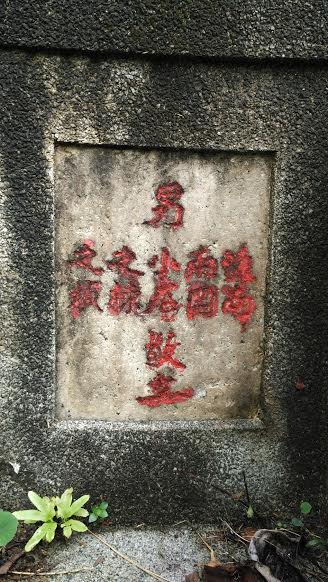


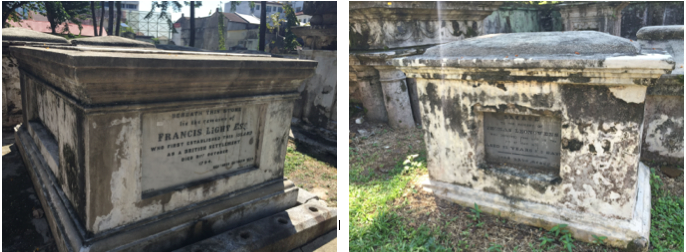





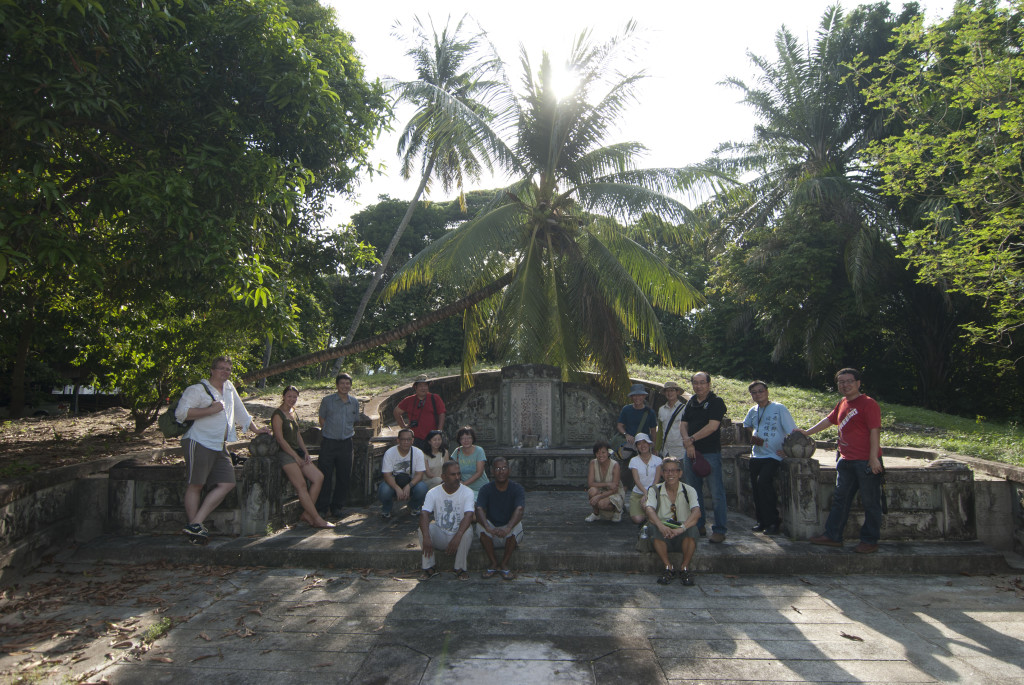
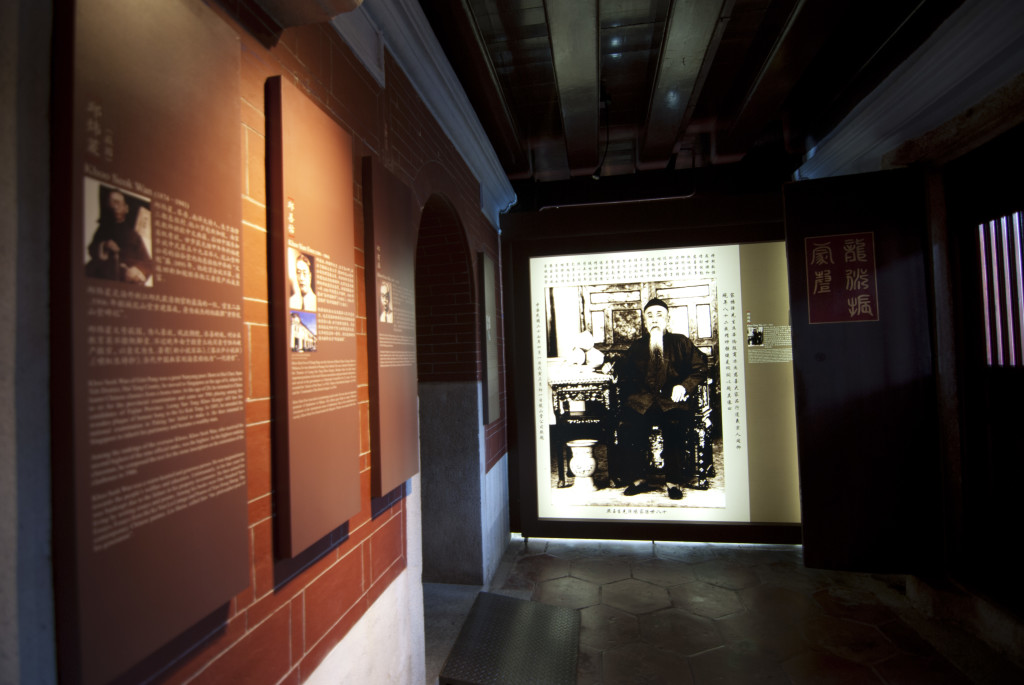

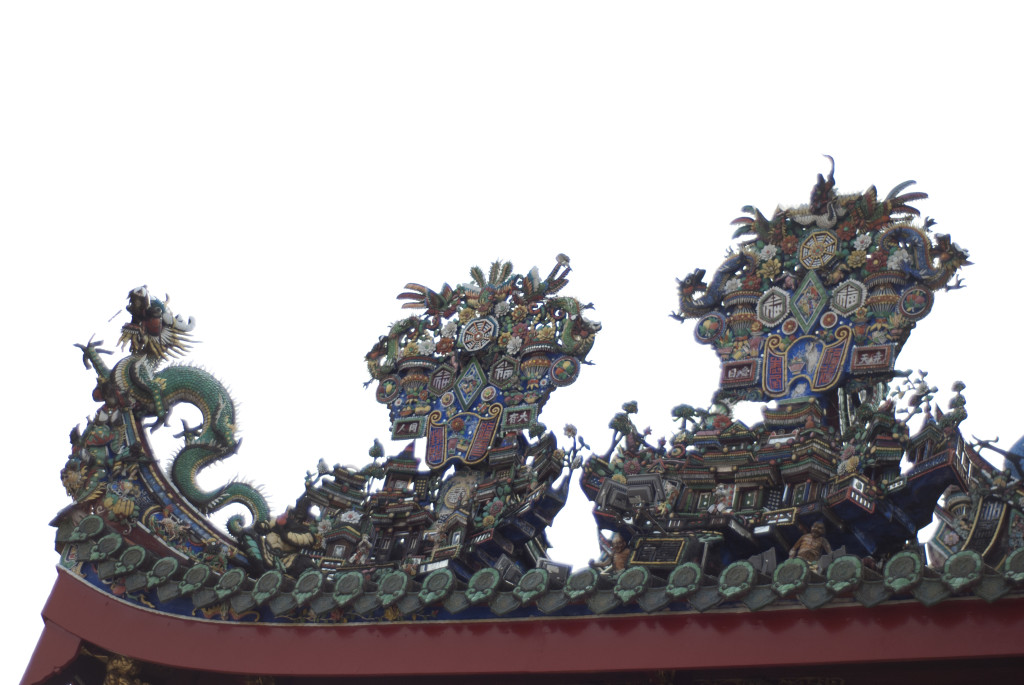





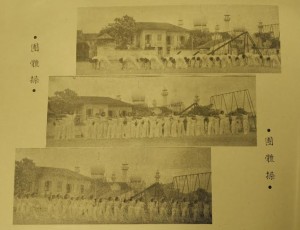
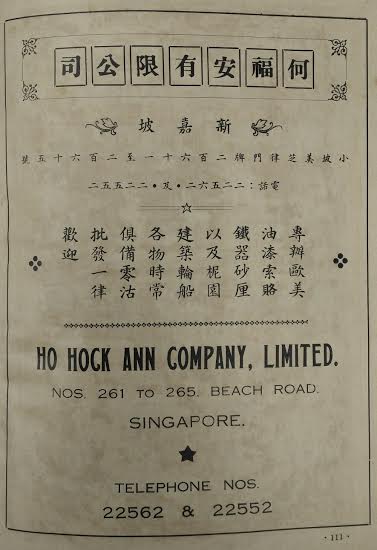

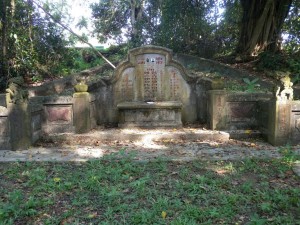

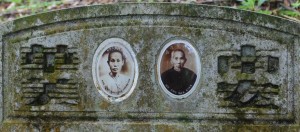

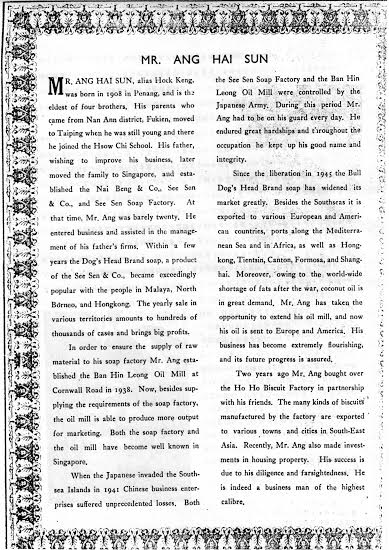
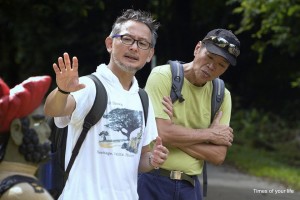
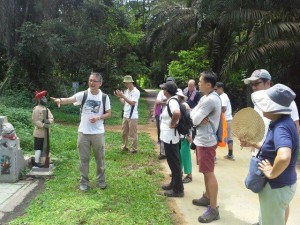
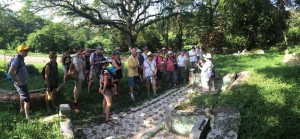
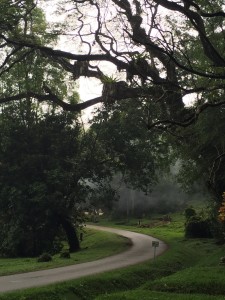
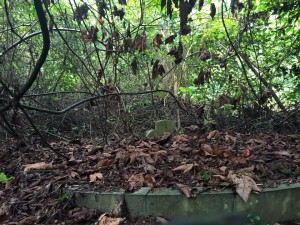
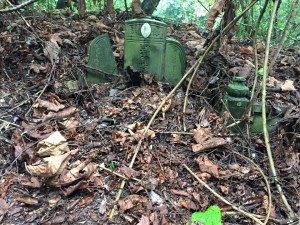
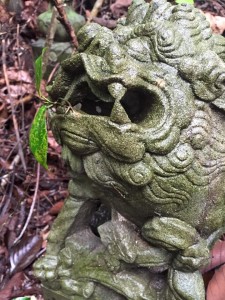

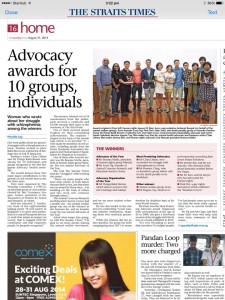
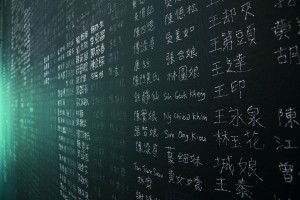
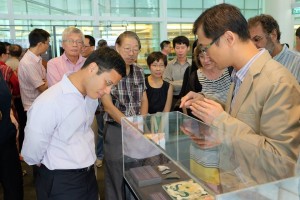


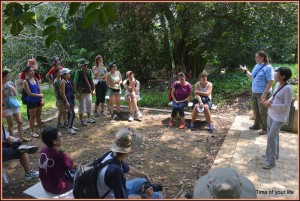

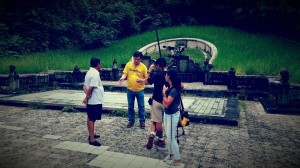

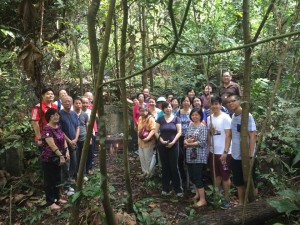
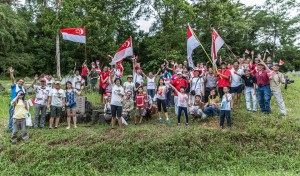
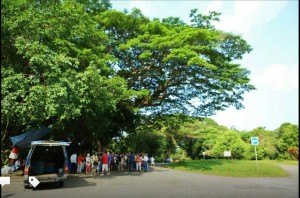
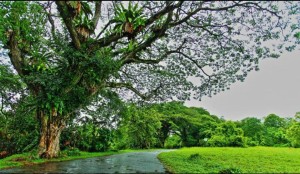

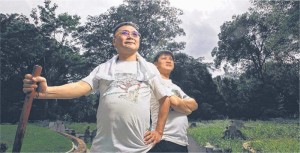

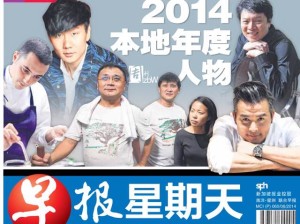

Recent Comments